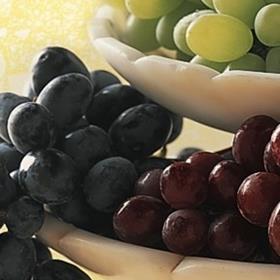
The first California grape shipments to Australia for this season will touch down in Australian airports early next week, following the recent reinstatement of market access under revised conditions.
Australia suspended access for US grapes, strawberries and cherries back in March following the detection of spotted-wing drosophila (SWD) in California, a rapidly developing fruit fly with the potential to devastate crops.
While shipments of strawberries and cherries were swiftly resumed under strict conditions involving methyl bromide fumigation, the US grape industry hung out to negotiate a different protocol based on cold treatment, a process that is far less harsh on fruit quality and shelf life.
Such efforts have failed to bear fruit, however, with Biosecurity Australia unable to verify the efficiency of cold treatment in combating SWD. Instead, access has been permitted under a stringent protocol involving SO2 and CO2 treatment as well as methyl bromide fumigation.
The outcome is somewhat disappointing to US shippers and Australian importers. Delays in securing a revised protocol mean that a large part of this season has been lost, while methyl bromide fumigation represents a significant impediment to trade, and a return to the restrictive import conditions seen prior to 2007.
“Methyl bromide fumigation is what we had previously and it messed up all grapes, but particularly the green grapes,” said Neil Barker of Melbourne-based import company BGP International. “Now they’ve reintroduced methyl bromide requirements, we won’t see any real volumes coming over. It makes shipping by sea very difficult indeed.”
Garth Lockyer of fellow Australian importer Valleyfresh also believes seafreight will be nigh impossible to bring off successfully under the new protocol, especially for white grapes. “Anyone putting product on the water would be a brave person as it’s hard enough shipping by air `under this protocol`,” he told Fruitnet.com. “US shippers are not that hard-pressed to stand behind shipments either – they want the receivers to take the risk.”
The ability to seafreight product has been key to ramping up California grape shipments to Australia over the past three seasons. After methyl bromide fumigation requirements were lifted with effect from the 2007 season, Australia's import volumes increased around four-fold, reaching 12,236 tonnes. And Australia ranked as the fifth-largest export market for California grapes in 2009, taking more than 2m cartons of fruit.
While largely confined to handling airfreight shipments this year, importers are still keen to proceed given the strong window in the Australian market for grapes right now.
“We’ll take our first arrivals of US grapes next week,” Mr Barker told Fruitnet.com. “They’re a lot more expensive when shipped by air but there are currently no grapes available in Australia and there’s not much choice `for consumers` on all fruit right now.”
While white seedless grapes such as Thompson Seedless remain most sought-after by Australian retailers and consumers, BGP will focus on red grapes such as Crimson Seedless initially, according to Mr Barker, as they can better handle the fumigation protocol. However, he noted that other importers are planning to bring in white seedless Thompson grapes as well as black varieties.
Besides ramping up retail prices, the need to airfreight product could also curtail the import season. “The big retail chains here control a sizeable share of grape import sales and there will be some reservations about having California grapes after the beginning of October as production from Emerald `in Queensland` comes online then,” Mr Barker said. “US imports can be competitive if shipped by sea but airfreighted fruit is not as competitive on price and there is no benefit in terms of quality now with the methyl bromide requirements.”
While the new protocol is likely to crimp import volumes this season, the US industry is continuing to negotiate for more favourable terms of access, though that will require further research work, Mr Barker believes. “Until the US can prove its cold treatment methods are effective in combating SWD then Australia will insist on fumigation,” he said. “The US has done some trials but is going to have to do more to prove the process satisfactorily for Australia.”



